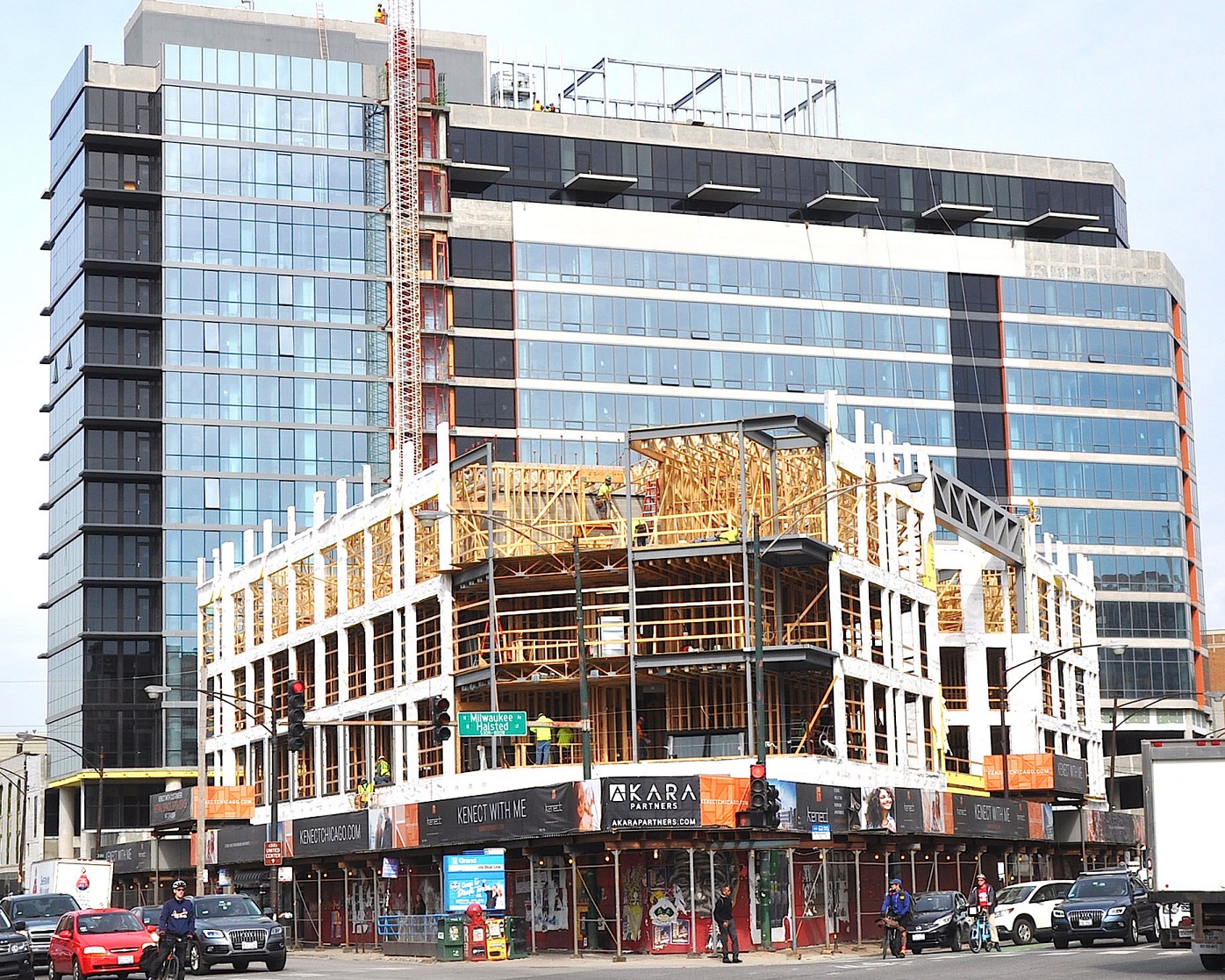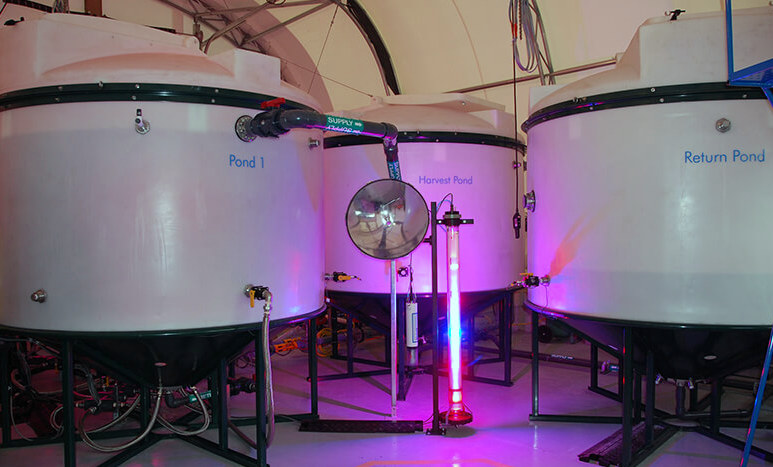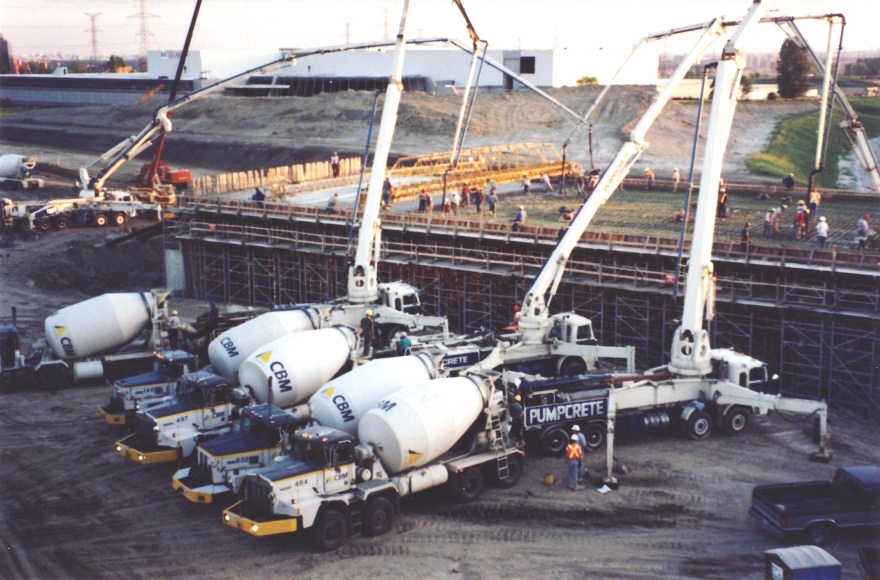Concrete industry pushes back on timber construction

Demand for ready mix concrete in North America is strong as building resumes its pre-2008 pace. Even so, a sector of the traditional concrete market faces headwinds as well-funded advocates push for more wood construction.
Wood-frame buildings of four to seven stories are showing up across the U.S. and Canada in greater numbers. The trend encompasses residential buildings, from multi-family projects to hotels, motels, dorms and long-term care facilities.
Some commercial projects such as office buildings, schools, retail and manufacturing plants are going with wood too.

In the U.S., the National Ready Mix Concrete Association (NRMCA) reports that from 2004 to 2014, concrete’s market share in the four-to-seven-story low/mid-rise (LMR) category dropped from 30% to 22%, while wood construction in this sector grew from 23% to 40%.
Several factors are driving the trend, including:
- Sharp declines in the price of wood, which hit a five-year low in November 2015.
- Investment in marketing, education and advocacy efforts by the wood industry, totaling $33 million since 2012.
- Building code changes allowing the use of Type V construction up to six stories when paired with specific fire abatement sprinkler systems.
- Legislative measures such as the Wood First initiative in British Columbia, mandating wood as the first choice of material for provincially funded projects. The U.S. Congress recently approved a study of wood construction, signaling the possibility of future pro-wood legislation.
Advocates also cite wood’s renewability and carbon-sequestering characteristics as an advantage in sustainable building. Newer forms of wood such as cross-laminated timber (CLT) and advanced manufactured-wood products have stimulated additional interest in wood’s structural possibilities.
Powerful response from concrete advocates
Despite the arguments in favor of wood, concrete remains the superior choice from the standpoint of fire safety, lasting strength and LEED certification, say industry experts. In the U.S., the NRMCA has launched the Build with Strength campaign to make sure that architects, engineers and builders have all the facts when choosing materials for LMR structures.
This aggressive 5-year, $20 million initiative seeks to increase the share of concrete in low- and mid-rise construction by 50% over the next 5 years. A blend of education, promotion, direct project support and advocacy, the campaign includes a Design Assistance Program (DAP) for Buildings, employing technical experts who furnish developers, designers and contractors with preliminary designs, cost estimates and operating-cost benefits for LMR projects.
Build with Strength also emphasizes concrete’s longstanding contribution to LEED certification, both in the construction phase and long-term use phase. The Concrete Sustainability Hub at MIT has developed a cradle-to-cradle Life-Cycle Analysis for both residential and commercial buildings to make these advantages clear.
U.S. advocates are taking their case to the public, too. In Florida, the Concrete Block Association has launched a new awareness campaign complete with TV spots, a website, and a Facebook page. The campaign focuses on the lasting soundness of structures built with concrete block and Integrated Concrete Forms (ICFs).
The association also launched an apprenticeship program to expand employment opportunities for workers in the block and ICF sectors, a move that aligns with local and state government initiatives to strengthen local economies.
Crucial questions of safety, strength, sustainability
Concrete’s absolute resistance to fire has always been one of its greatest strengths – a fact that even the addition of superior sprinkler systems can’t blunt.
“Most of the LMR wood-frame buildings we’re seeing are not the high-end, CLT projects which are said to have better fire resistance,” reports Lionel Lemay, Senior Vice President of Structures and Sustainability for NRMCA. “These builders are using traditional stick framing on homes, four-story motels and large, three- to five-story multi-family residential projects.”
Devastating fires in four-to-six story multi-family buildings in Los Angeles, California and Edgewater, New Jersey show that stick construction still can’t stand up to fire risks.
Where wood towers are concerned, advocates face a major challenge in proving that laminated wood panels are sufficiently fire-resistant and strong enough to withstand overall structural stresses with resiliency equal to concrete.
Yet another question is whether trees used to make laminated panels and lightweight lumber can be sustainably grown and harvested. Right now, only four percent of all U.S. forests are sustainably managed under the auspices of the Forest Stewardship Council, and the fertilizer runoff from lumber operations is blamed for some algae blooms that threaten the health of nearby water systems.
Other hurdles for tall wood construction include:
- Creating a supply chain with enough producers to create competitive pricing for laminated panels. (Currently, there are only three producers in North America.)
- Getting the insurance and banking industries on board, especially in light of fire, tornado and hurricane damage risks.
- Development of design software to support related projects.
Concrete’s advantages remain clear
Concrete’s strength, durability and resilience, backed by well-known, effective design and construction techniques, give this proven material a compelling advantage. Our industry continues to move forward with innovations that make ready mix concrete the right choice for LMR and tall construction.
Sustainability. Decades of advancement have made modern ready mix concrete more eco-friendly than ever. The use of recycled aggregates, supplementary cementitious materials like fly ash and slag to replace cement and the use of non-potable water all contribute to a greener product. One promising technology converts recycled carbon dioxide into nano-materials of solid carbonate minerals dispersed throughout the mix, essentially sequestering the CO2 permanently in the concrete.
Speed of construction. Fast-track technologies like ICF and tilt-up have the potential to compete against timber building, with initial cost differences mitigated by energy efficiency over the life of the building.

The town of Waterloo, Ontario in the Greater Toronto area has seen more than 80 ICF buildings go up during the past nine years, both mid-rise and high-rise structures up to 25 stories. “What started as a single-family residential technology is now becoming a commercial program with a lot of potential,” says Lemay.
Rethinking a wood project in Toronto
Steve Gobbatto, Commercial Sales and Marketing Manager at St Marys CBM, recently met with a low-rise residential builder in Toronto who was starting his first mid-rise project, a 5-story multi-family complex.
“His original take was that wood construction might deliver lower cost and faster turnaround time,” Gobbatto says. “But as the owner of a third-generation construction company he wasn’t comfortable staking his reputation on wood at that height. In the end, he chose a composite steel and concrete structure because it was competitive with wood and provided the proven long-term durability and value that matches the company’s commitment to quality.”
Strengthening our market position through education, advocacy
The concrete industry is firm in its resolve to make sure that designers and builders know the benefits of choosing concrete over wood. NRMCA offers some simple math to demonstrate what’s at stake.
“An all-concrete, six-story building would have about 10,000 cubic yards in it,” Lemay says. “A composite, steel-and-concrete building would include about 5,000 yards. If you go with wood construction, you’d have only around 2,000 yards of concrete,” he says. So preventing the switch from concrete to wood means retaining 80% of total revenue for that building.

Architects and builders focused on structural soundness, low noise transmission, weather resistance and long-term sustainability will remain focused on concrete, says Jim Munro, President and General Manager, North American Ready Mix for Votorantim Cimentos.
“We know that concrete provides a safer, quieter, more energy-efficient and comfortable living experience for residential projects – multi-family residences, long-term care, dormitories, hospitals and hotels,” Munro states. “We look forward to working with industry advocates in making sure that owners and other decision-makers have all the facts about concrete when choosing materials for LMR projects, especially in residential buildings.”










 United Materials
United Materials Superior Materials
Superior Materials Prairie Materials
Prairie Materials Canada Building Materials
Canada Building Materials VC Global
VC Global